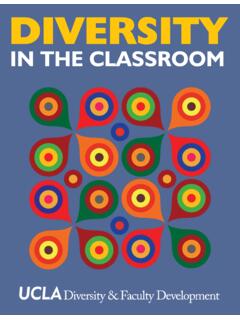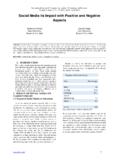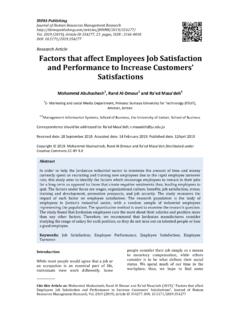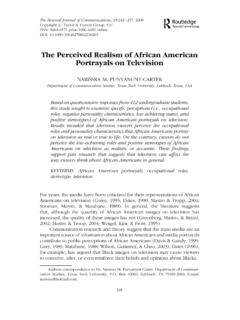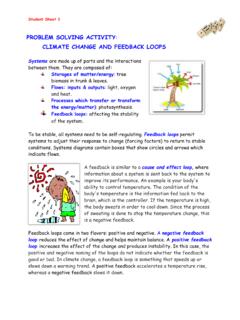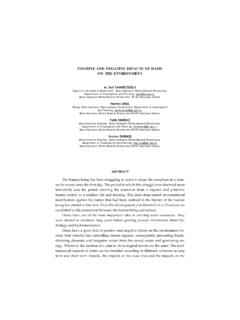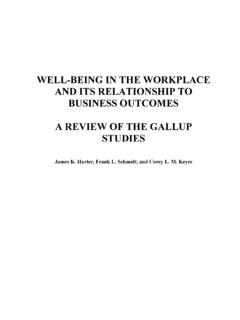Transcription of CREATING A POSITIVE FOR DIVERSITY
1 CREATING A POSITIVEFOR DIVERSITYC ontact UCLA s office of DIVERSITY & Faculty Development for permission to reproduce this booklet for educational purposes. Email or call (310) A POSITIVE CLASSROOM CLIMATE FOR DIVERSITYJUAN C. GARIBAYC reating a POSITIVE Classroom Climate for DIVERSITY , 2015 3 WHY THE CLASSROOM CLIMATE IS IMPORTANT FOR LEARNINGTHE LEARNING ENVIRONMENT in a class can affect student engagement and performance. Whether the class is in a large lecture hall, a small seminar, or a laboratory section, a learning envi-ronment where all feel safe, valued, and respected is necessary for students to achieve and demonstrate their full potential. Since a negative environment can be an obstacle to learning, it is essential to under-stand how to create and sustain a POSITIVE climate for all students. Elements of the learning environment that need to be addressed include the physical pro-viding adequate materials or reducing noise to the psychosocial how students feel and are treated in the classroom.
2 In order for a classroom to have an inclusive climate for DIVERSITY , students must feel supported in the components of the course, including content, discussion, physical/structural aspects, and class meeting times. Although all participants (students, teaching assistants, and instructors) in a course play a part, the faculty member s role is central in the formation of the climate for DIVERSITY . Faculty have the power to select course content, facilitate discussion, and reward learning all of which can affect the classroom climate. In order to make sure that the climate is conducive to learning and to the success of all students, faculty should consider the elements that affect classroom climate when planning a course. STUDENT DIVERSITY IN THE CLASSROOMSTUDENTS bring their own multiple social group identities to the learning environment. These identities can include, but are not limited to, gender, race/ethnicity, immigration status, sexual orientation, dis/ability, age, socioeconomic status, and religion.
3 It is the responsibility of faculty members to treat every student as an individual and to focus on the learning success of each student in a class. The broader society has defined, ascribed meaning, and given status and power to these identities (John-son, 2005; Omi and Winant, 1994; Tatum, 2000). Since they can shape the experiences of students within classrooms, it is critical for professors to understand these various social identities in order to actively develop inclusive learning environments for all studentsCLASSROOM CLIMATESA STUDY by DeSurra and Church (1994) shows that a useful way to think about climate in the classroom is through two sets of oppositions along a continuum: marginalizing vs. centralizing and explicit vs. implicit. Explicitly marginalizing climates are hostile, unwelcoming, or discriminatory. Class-rooms where instructors and/or students openly express demeaning attitudes about particular, espe-cially marginalized, groups are considered explicitly marginalizing climates.
4 Implicitly marginalizing climates exclude certain groups of people in more subtle and indirect ways. These climates can be more difficult to recognize, given that implicitly marginal-izing climates can develop even when instructors or students are consciously attempting to be welcoming or encouraging. When instructors request that stu-dents not use race/ethnicity in a particular analysis or discussion, they send the message that racial/ethnic experiences are not valid in intellectual discussions. Or, an instructor may call on a student from a histor-ically marginalized group to represent the perspec-tives of the entire group. In their study, DeSurra and Church found that implicitly marginalizing rather than explicitly marginalizing climates are most common in college the other continuum are implicitly centralizing and explicitly centralizing climates. Implicitly centralizing climates are those where unplanned responses that validate alternative perspectives and 4 occur.
5 If, for example, a student takes a risk and raises a perspective from a historically marginalized group (not knowing how the contribution will be received), the instructor can build on the student s contribution in a productive and validating way. Such a result promotes learning for everyone. In explicitly centralizing classrooms, historically marginalized groups and perspectives are both validated in spontaneous discussions and are intentionally and overtly integrated into the content. These courses also often contain written ground rules for discussion and course policies to foster inclusivity and sensitivity to the experiences and perspectives of all students. CLIMATE IMPACTS LEARNING AN EXTENSIVE BODY of research documents how various elements of the climate formal and informal interactions, the numerical representa-tion of individuals from diverse social identities, or individuals perceptions of the environment may impact student learning (Hurtado et al.)
6 2012). While extensive and complex, this body of research general-ly shows that POSITIVE interactions with other groups, higher levels of compositional DIVERSITY on a cam-pus, and POSITIVE perceptions of the campus climate are all positively associated with student learning, satisfaction, and success. negative experiences with these same elements of the climate can have negative effects on student outcomes. Even though many of these studies focus on measures of the climate at an institutional level, these findings have important im-plications and applications for the classroom as well. Given that it represents the center of the educational experience for students and faculty, the classroom is a critical sphere where many aspects of the campus climate materialize. Studies that have specifically focused on hostile classroom climates document marginalization on the basis of gender (Hall, 1982; Hall and Sandler, 1984; Pascarella et al.
7 , 1997; Sandler and Hall, 1986; Whitt et al., 1999), race and ethnicity (Hurtado et al., 1999; Watson et al., 2002), and sexual orientation (DeSurra and Church, 1994). Classroom climates that are hostile toward historically marginalized groups are not only less hospitable for those groups but also inhibit the motivation to learn and the cognitive ACKNOWLEDGING THE VALUE OF DIVERSITY In order to encourage all students to achieve, instructors need to communicate the importance of DIVERSITY in the practice of all disciplines in the university. Acknowledging the value you place on DIVERSITY is essential to CREATING a POSITIVE classroom climate from the very beginning of the course. Including a statement in the syllabus is a good place to start, for example:Respect for DIVERSITY : I consider it part of my responsibility as instructor to address the learning needs of all of the students in this course.
8 I will present materials that are respectful of DIVERSITY : race, color, ethnicity, gender, age, disability, religious beliefs, political preference, sexual orientation, gender identity, citizenship, or national origin among other personal characteristics. I also believe that the DIVERSITY of student experiences and perspectives is essential to the deepening of knowledge in a course. Any suggestions that you have about other ways to include the value of DIVERSITY in this course are welcome. In scheduling midterms and other exams, I have tried to avoid conflicts with major religious holidays. If there is a conflict with your religious observances, please let me know as soon as possible so that we can work together to make : College of Education Syllabus Checklist, Univer-sity of Iowa, ; Class Atmosphere, University of Minnesota, ; DIVERSITY and Inclusion, Faculty Center for Teaching and Learning, University of Central Florida, #diversityCreating a POSITIVE Classroom Climate for DIVERSITY , 2015 5development of students (Ambrose et al.)
9 , 2010; Hall and Sandler, 1984). Expressing or validating stereotypes is a powerful way that faculty can create negative learning experiences for students from historically marginalized stereotypes can inhibit learning and performance in the classroom, it is essential that faculty consider the messages they are sending and actively communicate respect and expectation of success for all students. Steele and Aronson s (1995) groundbreaking study on the influence of stereotypes shows that the sense of threat that arises in members of a stereotyped group can negatively affect their level of preparation, their self-confidence, and their performance on tasks regardless of their ability. This phenomenon is termed stereotype threat. This threat can be triggered regardless of whether the activation of a stereotype is intentional or not. Operating through both cognitive and motivational mediating mechanisms, stereotypes generate emotions such as anger and frustration that limit the ability of an individual to think clearly and disrupt their cognitive processes (Steele and Aronson, 1995).
10 Stereotype threat can also trigger coping mechanisms. To protect their self-concept against potentially legitimizing the stereotype of low performance, a student might, for example, disidentify with a chosen discipline (Major et al., 1998). A recent study by Chang et al. (2011) presents evidence that stereotype threat can influence the persistence of underrepresented racial minority students in the sciences. Conversely, studies show that more POSITIVE classroom climates can have a POSITIVE relationship with student outcomes. Results from a study focused on the educational significance of racial and ethnic composition found that classrooms with medium levels of heterogeneity (where students from racial minority groups composed 33 to 38% of enrolled students) reveal POSITIVE effects on students problem-solving abilities and group skills (Terenzini et al., 2001). Group discussions that include viewpoints from diverse students stimulate higher integrative complexity (Antonio et al.)



